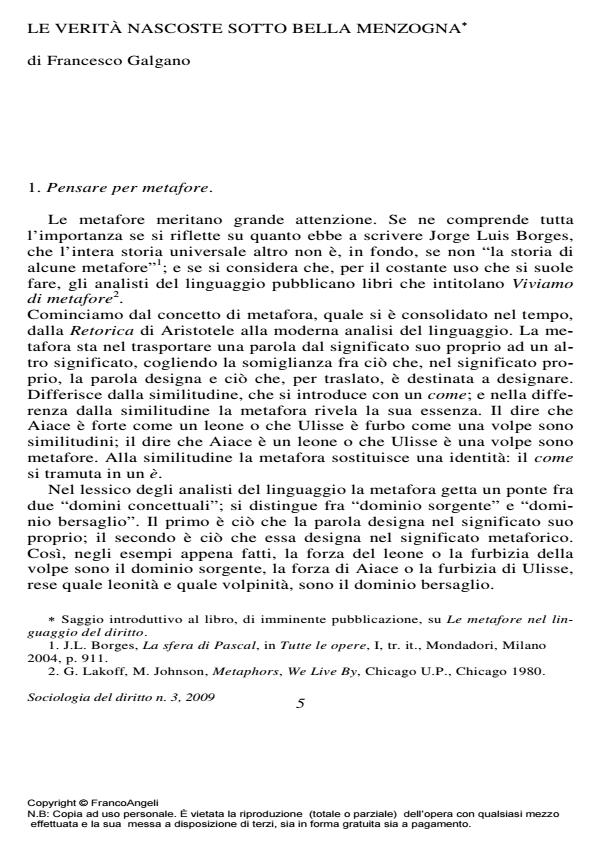Le verità nascoste sotto bella menzogna
Titolo Rivista SOCIOLOGIA DEL DIRITTO
Autori/Curatori Francesco Galgano
Anno di pubblicazione 2010 Fascicolo 2009/3
Lingua Italiano Numero pagine 15 P. 5-19 Dimensione file 416 KB
DOI 10.3280/SD2009-003001
Il DOI è il codice a barre della proprietà intellettuale: per saperne di più
clicca qui
Qui sotto puoi vedere in anteprima la prima pagina di questo articolo.
Se questo articolo ti interessa, lo puoi acquistare (e scaricare in formato pdf) seguendo le facili indicazioni per acquistare il download credit. Acquista Download Credits per scaricare questo Articolo in formato PDF

FrancoAngeli è membro della Publishers International Linking Association, Inc (PILA)associazione indipendente e non profit per facilitare (attraverso i servizi tecnologici implementati da CrossRef.org) l’accesso degli studiosi ai contenuti digitali nelle pubblicazioni professionali e scientifiche
Metaphors can be found in every form of linguistic communication, including the language of precepts, such as that used in legal orders. It represents reality figuratively, equating similarity with identity, converting the "as if" into an "it is". Dante described a metaphor as the "truth that hides beneath a beautiful falsehood". A metaphor is generally harmless enough: nobody treats what is only a successful verbal device as if its success alone were enough to make it true. Nonetheless, it can be insidious: this is sometimes the case in legal language, when a metaphor attributes to an abstract entity a name that also belongs to something in the tangible world, thus moving beyond the realms of common sense. This leads to a risk that the metaphor will be taken seriously and mistaken for reality, as in the case of what has happened with legal persons, securities, intellectual property and so on. This does not mean that we should go to the opposite extreme, as some have done, that of outlawing a concept from our language as soon as its metaphorical nature is revealed. Metaphors are very often effective ways of summarising lengthy and complex verbal reasonings that could otherwise only be expressed in elaborate circumlocutions. The point is that, once this "hidden truth" is identified, the right way to proceed is to use the truth itself, rather than the "beautiful falsehood" that summarises it, for the purpose of drawing legal conclusions.
Francesco Galgano, Le verità nascoste sotto bella menzogna in "SOCIOLOGIA DEL DIRITTO " 3/2009, pp 5-19, DOI: 10.3280/SD2009-003001